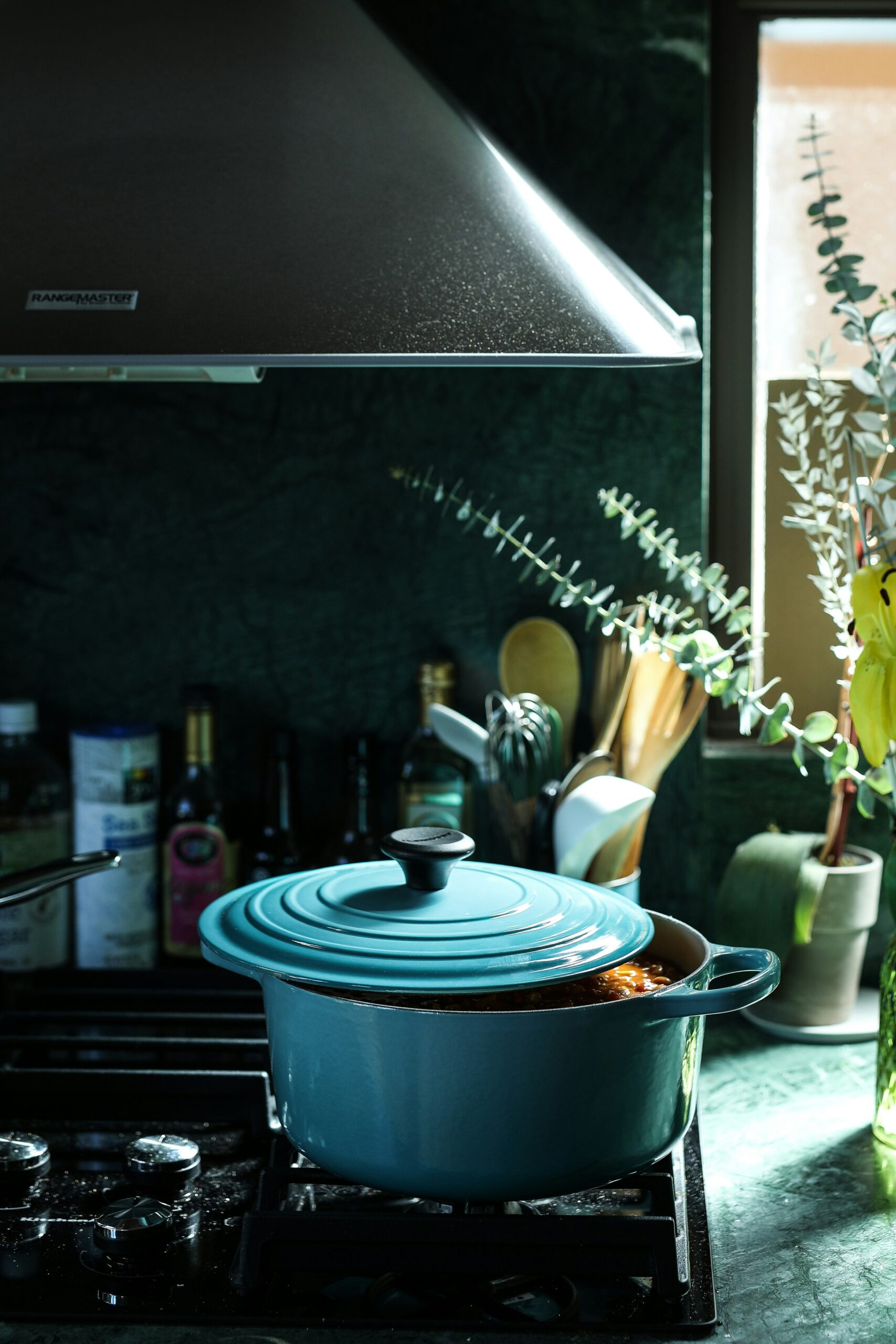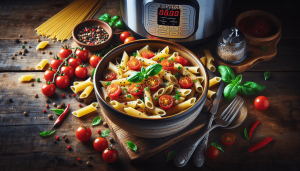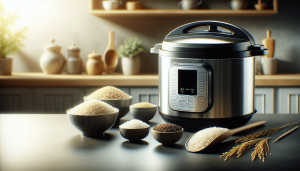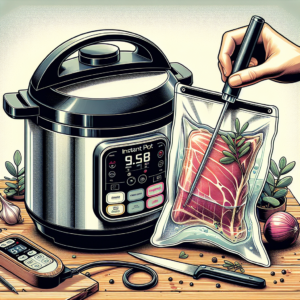If you’re a fan of the Instant Pot and love the convenience of cooking with it, you’ve likely encountered the frustrating problem of food burn. Nothing ruins a perfectly planned meal like finding out that your dish has burnt at the bottom of your Instant Pot, leaving you with a mess to clean up and a disappointing meal to serve. But fear not, because in this article, we’re going to share some handy tips and tricks to help you prevent food burn in your beloved Instant Pot. With these simple strategies, you’ll be able to enjoy delicious and perfectly cooked meals every time you use your Instant Pot. So say goodbye to burnt meals and hello to culinary success!
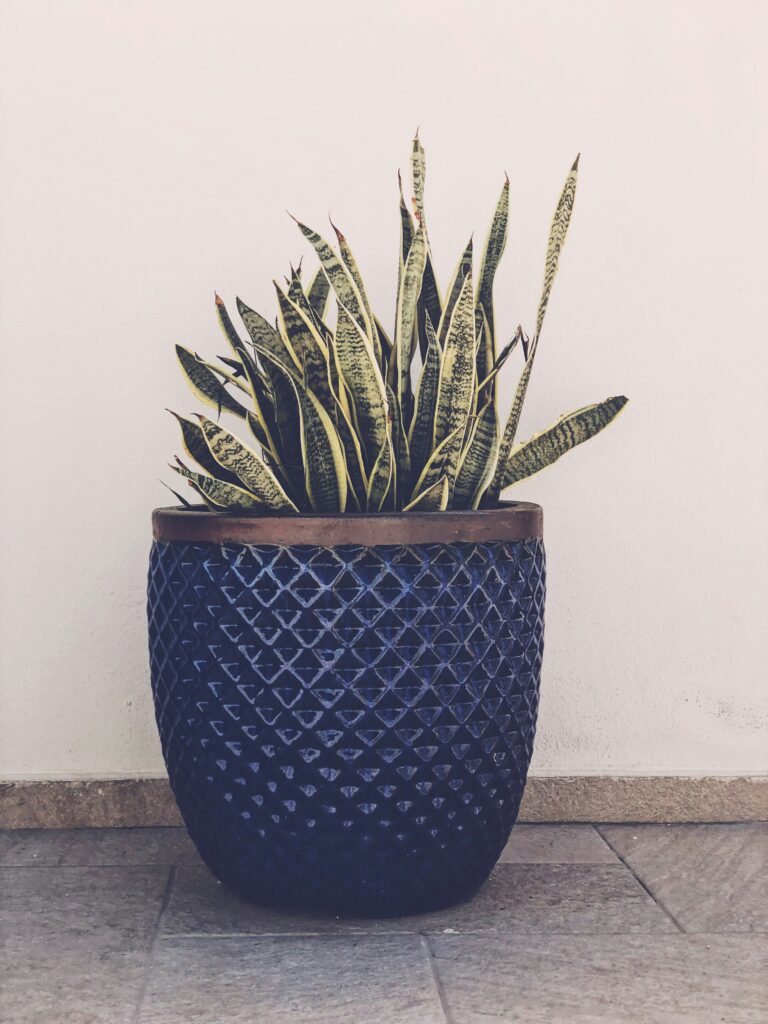
Understanding the Instant Pot
The Instant Pot has become a beloved kitchen appliance for many of us, and it’s easy to see why. This versatile, all-in-one cooker can save us time and effort in the kitchen while still delivering delicious meals. However, to truly make the most of our Instant Pot and prevent any mishaps, it’s important to have a good understanding of how it works and how to use it properly.
The benefits of using an Instant Pot
Using an Instant Pot comes with a range of benefits that make it a worthwhile addition to any kitchen. First and foremost, it saves us time. With its ability to cook food quickly under pressure, we can enjoy meals that would typically take hours in just a fraction of the time. Additionally, the Instant Pot is incredibly versatile, offering a variety of cooking functions that allow us to steam, sauté, slow cook, and more. It’s also highly efficient, using less energy compared to traditional cooking methods. And, of course, the Instant Pot helps us achieve tender and flavorful dishes, thanks to the sealed cooking environment that locks in moisture and flavors.
Common causes of food burn in an Instant Pot
While the Instant Pot is designed to make cooking easier, it’s not entirely immune to the occasional mishap. One common issue that users may encounter is food burn. This can happen due to a few different reasons, such as using too little liquid, overcrowding the pot, or using ingredients that have a tendency to stick and scorch. Understanding these causes and taking steps to prevent them can help us avoid frustrating moments in the kitchen.
Preparation and Ingredients
Proper preparation and the right choice of ingredients are essential for successful cooking in the Instant Pot. Here are a few key points to keep in mind:
Using the correct amount of liquid
Using the correct amount of liquid is crucial in the Instant Pot. Not enough liquid can lead to food burn, while too much liquid can dilute the flavors. As a general rule of thumb, it is recommended to use at least one cup of liquid for most recipes. However, recipes may vary, so it’s important to follow the instructions specific to the dish being prepared.
Choosing the right ingredients
Certain ingredients have a higher tendency to burn in the Instant Pot. Ingredients like tomato paste, dairy, and honey can easily scorch if not used properly. When using these ingredients, it’s important to dilute or combine them with other ingredients to minimize the risk of burning.
Preparing ingredients properly
Preparing ingredients properly can help prevent food burn and ensure even cooking. For vegetables and meats, it’s important to cut them into uniform sizes to ensure they cook evenly. For grains and legumes, rinsing them thoroughly before cooking can help remove excess starch that could lead to sticking and burning.

Using the Instant Pot
Now that we have our ingredients prepared, it’s time to use the Instant Pot. Here are some important tips for using it effectively:
Properly preheating the Instant Pot
Preheating the Instant Pot before adding the ingredients can help prevent food from sticking to the bottom and burning. To preheat, select the sauté function and allow the pot to heat up for a few minutes. Once it’s hot, add a small amount of oil and spread it around the bottom before adding the rest of the ingredients.
Avoiding overcrowding
It’s important to avoid overcrowding the Instant Pot, as this can lead to uneven cooking and increase the chances of food burn. Instead, make sure to leave enough space for ingredients to expand and cook properly. It may be necessary to cook in batches or use a larger pot for larger quantities of food.
Using the right cooking setting
The Instant Pot offers a variety of cooking settings, each designed for specific types of dishes. It’s important to select the appropriate setting for the recipe at hand to ensure proper cooking and prevent food burn. For example, using the pressure cook setting for most recipes will provide the best results, as it allows for quick and efficient cooking while maintaining moisture.
Understanding the pressure release methods
Once the cooking process is complete, it’s important to understand different pressure release methods and choose the appropriate one for the dish being cooked. Quick pressure release can be used for recipes that require immediate release of pressure, while natural pressure release allows the pressure to naturally dissipate over time. Using the correct release method can help prevent overcooking and avoid potential food burn.
Adjusting Cooking Times
While the Instant Pot provides cooking time recommendations for various dishes, it’s important to remember that these times are not always set in stone. Depending on the type and thickness of the ingredients, adjustments may be necessary. Here are a few considerations to keep in mind:
Understanding cooking time recommendations
The Instant Pot provides recommended cooking times for various types of recipes, but it’s important to remember that these times are based on general guidelines. Factors such as altitude, ingredient temperature, and personal preferences can all impact cooking times. It’s essential to use the recommended times as a starting point and adjust as needed.
Making adjustments for different types of ingredients
Different types of ingredients may require different cooking times in the Instant Pot. For example, meat may need longer cooking times compared to vegetables. It’s important to consider these differences and adjust the cooking time accordingly to ensure all ingredients are cooked to perfection.
Considering the size and thickness of ingredients
The size and thickness of ingredients can also impact cooking times. Larger or thicker cuts of meat, for example, may take longer to cook compared to smaller or thinner cuts. It’s essential to take these factors into account when determining the appropriate cooking time to prevent undercooking or overcooking.
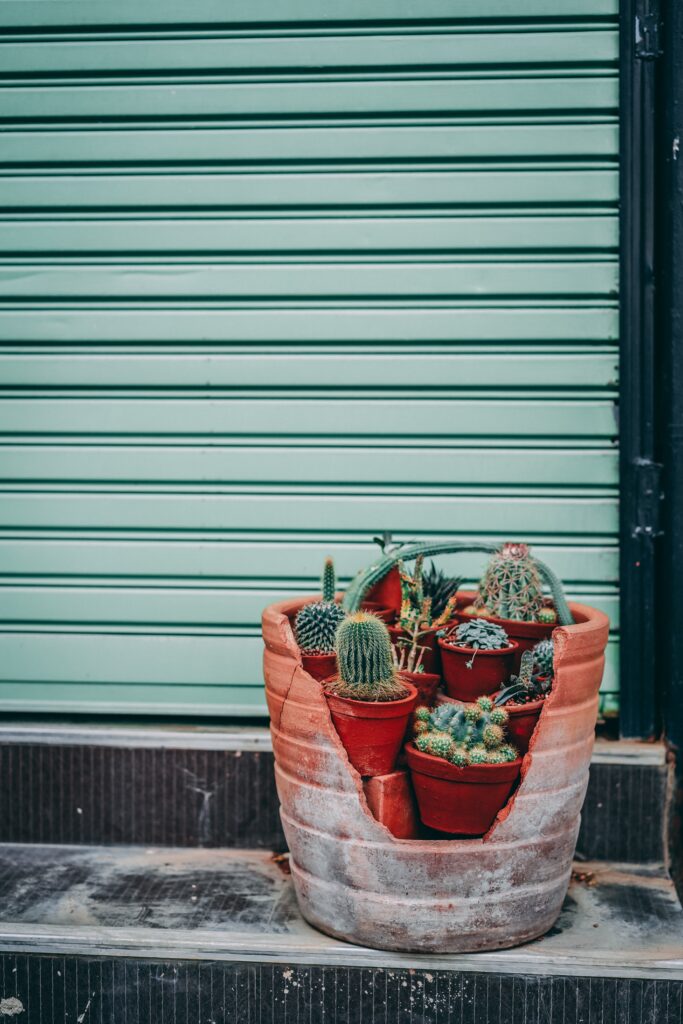
Monitoring and Adjusting
Even with proper preparation and cooking techniques, it’s important to actively monitor the cooking process in the Instant Pot and make necessary adjustments when needed. Here are some tips for doing so:
Frequent stirring
Frequent stirring during the cooking process can help distribute heat and prevent ingredients from sticking to the bottom, which could lead to burning. However, it’s important to note that opening the pot frequently can disrupt the cooking process, as it releases pressure. Therefore, it’s best to stir occasionally and only if necessary.
Adding more liquid if needed
If it appears that the dish is becoming too dry or at risk of burning, it may be necessary to add more liquid. Before opening the Instant Pot, make sure to use the appropriate pressure release method. Once the pressure is released and the pot is safely opened, add a small amount of liquid to create more moisture and prevent burning. Be cautious not to add too much liquid, as this may affect the overall taste and texture of the dish.
Making adjustments during the cooking process
Sometimes, despite our best efforts, food burn can still occur. If this happens, it’s crucial to act quickly to salvage the dish. Remove the pot from the heat source, carefully scrape off any burnt bits from the bottom, and transfer the remaining contents to a clean pot or pan. Adjust the heat and cooking time as needed, and continue cooking until the dish is done.
Cleaning and Maintenance
Proper cleaning and maintenance of the Instant Pot are essential to ensure its longevity and optimal performance. Here are some guidelines to follow:
Regularly cleaning the Instant Pot
After each use, it’s important to thoroughly clean the Instant Pot to remove any food residues and prevent odors. The inner pot, sealing ring, steam rack, and other removable parts can typically be hand-washed with warm soapy water. The exterior can be wiped clean with a damp cloth. It’s important to always consult the manufacturer’s instructions for specific cleaning recommendations.
Checking and replacing worn or damaged parts
Regularly inspect the Instant Pot for any signs of wear or damage. This includes checking the sealing ring for any cracks or tears and ensuring that the pressure release valve moves freely. If any parts are worn or damaged, they should be replaced promptly to maintain the safety and efficiency of the Instant Pot.

Troubleshooting Food Burn
Even with the best intentions, food burn can still happen in the Instant Pot. Here are some tips for troubleshooting and preventing it in the future:
Identifying signs of food burn
Signs of food burn in the Instant Pot can include a burnt smell, discolored food, or a burnt or stuck layer at the bottom of the pot. If any of these signs are present, it’s important to take immediate action to prevent further burning and salvage the dish if possible.
Rescuing burnt food
If food burn does occur, try not to panic. Remove the pot from the heat source, and carefully transfer the remaining contents to a clean pot or pan, leaving the burnt layer behind. Adjust the heat and continue cooking until the dish is done. While the final result may not be perfect, it may still be salvageable with some additional seasoning or sauce.
Preventing food burn in future attempts
To prevent food burn in the future, it’s important to pay close attention to the previous guidelines mentioned, such as using the correct amount of liquid, properly preparing ingredients, and choosing the appropriate cooking setting and release method. Additionally, it can be helpful to refer to recipes that specifically address Instant Pot cooking to gain insights and tips from experienced cooks.
Exploring Alternative Cooking Methods
While the Instant Pot is a fantastic tool, it’s not the only cooking method available. Exploring alternative cooking methods can add variety and help avoid potential issues like food burn. Here are a few ideas to consider:
Using other kitchen appliances
In addition to the Instant Pot, other kitchen appliances can be utilized for different cooking techniques. Slow cookers, ovens, and stovetop methods can all be excellent options for certain dishes. It’s important to choose the method that best suits the recipe at hand and allows for optimal results.
Utilizing different cooking techniques
Different cooking techniques, such as baking, grilling, or sautéing, can offer unique flavors and textures to our dishes. Mixing up our cooking techniques can help us avoid becoming solely reliant on the Instant Pot, expand our culinary skills, and discover new flavors and techniques.
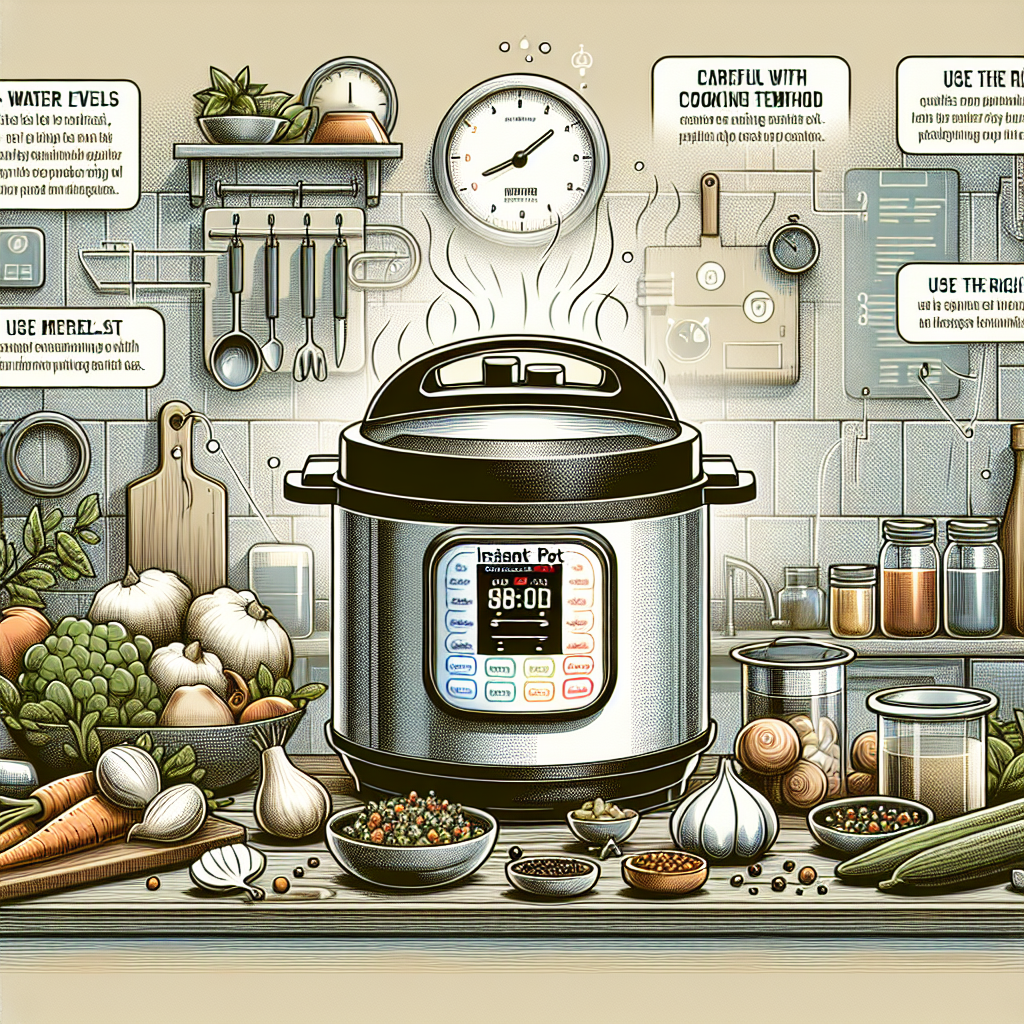
Seeking Recipe-Specific Tips
When cooking with the Instant Pot, a great source of guidance can be recipe-specific tips and instructions. Here are some ways to find and adapt recipes to avoid food burn:
Finding recipes with specific instructions
Look for recipes that include specific instructions for cooking in the Instant Pot. These recipes often take into account cooking times, ingredient preparation, and other factors that can help avoid potential issues like food burn. Online platforms, cookbooks, and dedicated Instant Pot recipe sites are great places to find these recipes.
Adapting recipes to avoid food burn
If we find a recipe that we love but it doesn’t include specific Instant Pot instructions, it’s possible to adapt it to suit the Instant Pot. Take note of the cooking time and temperature recommended in the original recipe, and make adjustments as necessary to match the settings available on the Instant Pot. It may take some trial and error, but with practice, we can become adept at adapting recipes to our Instant Pot.
Experimenting and Practice
Lastly, don’t be afraid to experiment and practice with your Instant Pot. Learning from our experiences and trying different techniques can help us become more comfortable with the appliance and discover new favorite recipes. Keep a record of successful recipes, noting any adjustments made, cooking times, and ingredient preparation. Over time, we’ll develop a better understanding of our Instant Pot and gain confidence in using it to create delicious meals.
In conclusion, the Instant Pot is a valuable tool for those who want to make their cooking experience easier, faster, and more efficient. By understanding how to properly use and maintain the Instant Pot, we can prevent food burn, troubleshoot any issues that arise, and continue enjoying the many benefits this versatile appliance has to offer. Happy cooking with your Instant Pot!

